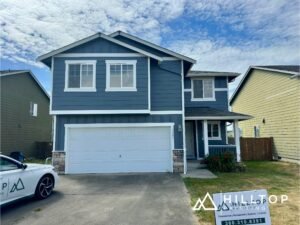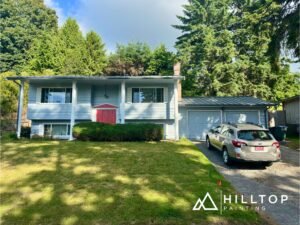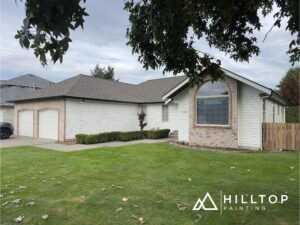
House Painting in Anacortes, Wa
Hilltop Painting is rated 4.9/5
Based on 83 reviews
Free Consultaion Available
No Obligation Estimate | Expert Advice
Your privacy is important to us.

House Painting in Anacortes, Wa
Welcome to Hilltop Painting, your premier House Painting in Anacortes, Wa. We are a team of professionals with years of experience in providing high-quality, affordable, and reliable services to residents and businesses. Look no further than House Painting in Anacortes, Wa, Hilltop Painting.
House Painting in Anacortes, Wa
Hilltop Painting stands out as the premier House Painting in Anacortes, Wa, owing to its unparalleled commitment to excellence and customer satisfaction. With a stellar reputation built on years of experience and a team of highly skilled professionals, Hilltop Painting brings a level of expertise that ensures each project is executed with precision and attention to detail.
Our use of top-quality materials combined with a keen understanding of the local climate ensures long-lasting and vibrant results that withstand the Pacific Northwest’s challenging weather conditions. Hilltop Painting prides itself on transparent communication, fair pricing, and a customer-centric approach that tailors each project to the unique needs and preferences of homeowners. Our dedication to delivering not just a service, but an experience, makes Hilltop Painting the clear choice for those seeking the highest standard of House Painting in Anacortes, Wa.
Our dedication to excellence is reflected in the glowing reviews we receive from our satisfied customers, who appreciate our commitment to providing a seamless, fun, and professional experience. A team that is like family. From our first conversation to our final walk-through, your experience is our top priority. As a trusted construction company, we excel in communication, ensuring that we not only help our customers throughout the construction process but also address any questions they may have promptly and comprehensively.
Anacortes, Washington, is a coastal city located on Fidalgo Island in Skagit County, rich with maritime history and cultural heritage. Long before European settlers arrived, the region was home to the Samish and Swinomish peoples, Coast Salish tribes who lived off the abundant natural resources of the Salish Sea. They built cedar longhouses, fished for salmon, gathered shellfish, and maintained complex trade and kinship networks throughout the islands. European explorers began mapping the area in the late 1700s, and by the mid-1800s, settlers were drawn to the island’s fertile land and timber. After the signing of the Point Elliott Treaty in 1855, many Indigenous residents were displaced, and non-Native settlement expanded rapidly across the region.
In 1877, railroad surveyor Amos Bowman and his wife, Anne Curtis Bowman, moved to the northern tip of Fidalgo Island. Bowman envisioned the area as a major industrial and railroad hub and began promoting it as the potential terminus of a transcontinental line. He founded the first local newspaper, The Northwest Enterprise, and renamed the settlement “Anacortes,” a stylized version of his wife’s name, Anne Curtis. Originally called Ship Harbor, the area’s post office was renamed Anacortes in 1879. The promise of a railroad brought a land-speculation boom between 1888 and 1890, as investors and settlers flooded the area hoping for economic opportunity. However, when the railroad plans collapsed, the boom quickly turned into a bust. Many speculators left, but the community persevered, officially incorporating as the City of Anacortes on May 19, 1891.
With its early dreams of becoming a major rail terminus dashed, Anacortes turned to industries tied to its natural surroundings. By the early 1900s, timber, fishing, fish processing, and farming had become the foundation of its economy. The city’s strategic location on the water made it a key shipping and shipbuilding center for the Puget Sound region. Immigrants, especially from Croatia’s Dalmatian Coast, played a major role in this new phase of growth. Croatian families settled in neighborhoods near Old Town and Cap Sante, bringing cultural traditions such as winemaking, family gatherings, and music that helped shape Anacortes’s community character. The city’s first brick building—constructed by Lewis & Dryden Engineers of Portland—became home to the Bank of Anacortes, symbolizing a growing local economy.
In the early 20th century, civic pride and community building flourished. The construction of Causland Memorial Park between 1919 and 1921, designed by John Baptiste LePage, reflected Anacortes’s artistic and commemorative spirit. The park, built from colorful local stone mosaics, remains a landmark honoring local veterans. By the 1920s, the city’s harbor and marine access spurred further economic development. In 1926, residents voted to create the Port of Anacortes, which soon expanded to include docks, marine terminals, and the now-popular Cap Sante Marina.
Industrial growth continued into the mid-20th century when several oil companies established refineries on nearby March’s Point. These refineries—today operated by companies such as Marathon (formerly Tesoro)—became central to the local economy, providing jobs but also raising environmental and safety concerns. Tragedy struck on April 2, 2010, when an explosion at the Tesoro refinery killed seven workers, marking one of the deadliest industrial accidents in Washington State history. Another maritime tragedy, the 1983 sinking of the Americus and Altair crab boats in the Bering Sea, claimed the lives of fourteen local fishermen and remains deeply remembered by the community.
As traditional industries such as logging and commercial fishing declined in the latter half of the 20th century, Anacortes evolved once again. Its economy shifted toward tourism, marine services, recreation, and residential development. The city became a major Washington State Ferries hub, connecting the mainland to Lopez, Shaw, Orcas, and San Juan Islands, as well as the smaller Guemes Island. Today, Anacortes balances its industrial roots with a focus on environmental preservation, cultural heritage, and community life. Its walkable downtown, historic buildings, art festivals, and waterfront parks make it both a scenic tourist destination and a proud reflection of Pacific Northwest resilience and identity.









